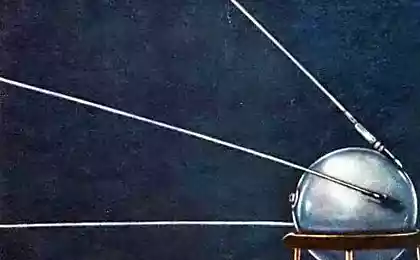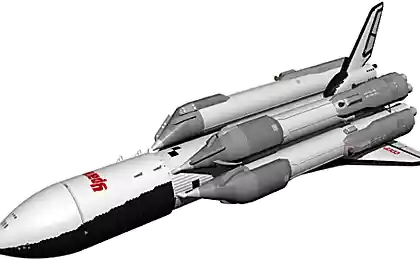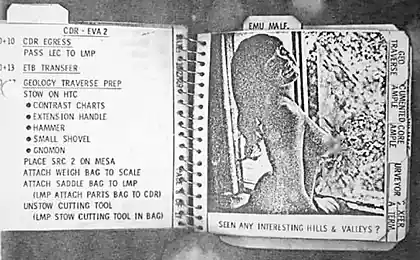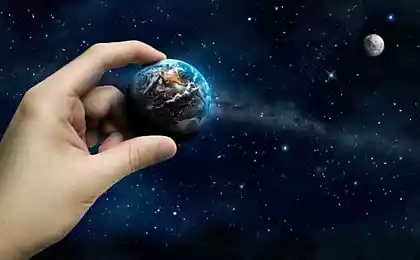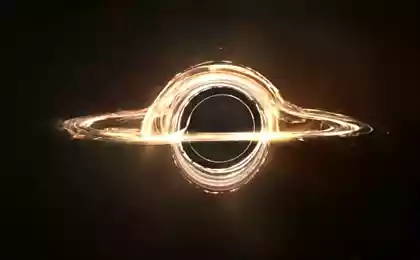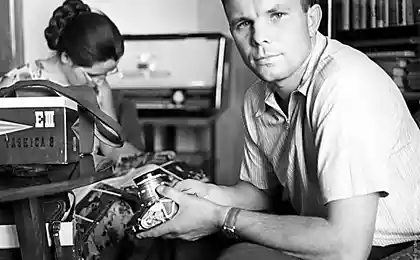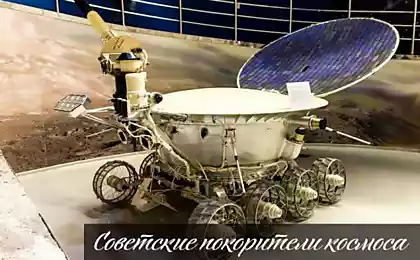229
10 exciting discoveries of space science
People have always wanted to know more about space, which is normal. It can hide answers to questions like “Where did we come from?”, “How did we get here?” and “Where are we going?” We are confident that space will forgive us the invasion of his privacy.
Anyway, after the European Space Agency (ESA) landed a high-speed spacecraft on a comet in an attempt to learn more about how our solar system was formed, and the recent approach to Pluto, we thought it was time to look at some other amazing cosmic histories.
10. The Study of Titan, Satellite of Saturn
On January 14, 2005, the European Space Agency's Huygens probe entered Titan's atmosphere after a seven-year space trip in conjunction with NASA's Cassini spacecraft. The probe showed that Titan is mostly very similar to the young Earth. It is full of sand dunes and lakes riddled with organic molecules that could theoretically support life.
9. Organic chemistry derived from the tail of a comet
In 2008, organic chemicals were discovered on a disk surrounding a star called HR 4796A, which is 220 light-years from Earth. Recently, NASA’s Hubble and Spitzer Space Telescopes were able to detect traces of carbon dioxide, methane and water vapor in the atmosphere of an exoplanet called HD 209458b. It basically tells us that life exists beyond our Earth. You can assume something, but the actual evidence is always cooler.
8. Is there life on Mars? No, but the water is there.
In 2008, NASA’s Phoenix lander visited the Red Planet to confirm the presence of water and look for signs of organic compounds. During one of the excavations, onboard cameras found a white powder that turned out to be ice. This not only confirms the presence of water on Mars, but also largely means that there is life there that uses water to survive. If you’re a fan of Doctor Who, you know you shouldn’t have high hopes.
7. Alien planets!
In 2008, astronomers using the Hubble Space Telescope and the Keck and Gemini infrared observatories in Hawaii confirmed that they had “seen” exoplanets orbiting distant stars. Both observatories captured images of these alien worlds. So we really can't rule out the existence of Daleks.
6. Dark Matter
The coolest name in astronomy. Unprecedented evidence emerged in 2006 from a careful analysis of gases and stars scattered after the collision of two giant galaxies in the Bullet cluster. This doesn’t explain exactly what dark matter is, but at least now scientists know it acts in a certain way.
5. Discovered Eris Moves Pluton to Back Plan (Poor Boy)
Good news for science lovers... and bad news for Pluto lovers. In 2005, Mike Brown discovered 136199 Eris, a small body 27 percent larger than Pluto. Eris overtook poor old Pluto to become the 9th largest planet orbiting the sun.
4. Telescope "Hubble" close to dark energy
Sounds almost as cool as dark matter (though not quite). In 2002, the Hubble Space Telescope was upgraded, contributing to the discovery of a mysterious force called dark energy. The discovery of Hubble led to a clearer understanding that dark energy is an invisible force that resists gravity, causing the expansion of the universe to accelerate.
3. For the first time, the “echo” of a large explosion
Presumably, the Big Bang that created the universe was quite loud. NASA went in search of an ancient “echo” The Big Bang by drawing up a background radiation diagram. Through small variations in the background radiation, they were able to accurately measure the age of the universe (13,730 million years), and also came to the conclusion that it consists of 96% of things that we can not even see.
2. Supermassive black hole under our nose
Black holes are a rather frightening phenomenon. Giant space pits to nowhere that engulf everything close enough. So, is it good news that a black hole with a giant mass of about 4.3 million? Is the Sun just 26,000 light-years from Earth? Hmm.
1. Water on the moon
While the surface of the moon is actually as dry as a sponge in the desert, on October 9, 2009, a NASA rocket formed a 30.5-meter-wide hole in the crater in which water was found. Not much, but enough for future colonists to be able to extract and purify it. Does anyone want to rent an apartment on the moon?
P.S. And remember, just changing our consumption – together we change the world!
Source: www.robo-hunter.com/news/10-samih-zahvativayshih-otkritii-kosmicheskoi-nauki
Anyway, after the European Space Agency (ESA) landed a high-speed spacecraft on a comet in an attempt to learn more about how our solar system was formed, and the recent approach to Pluto, we thought it was time to look at some other amazing cosmic histories.
10. The Study of Titan, Satellite of Saturn
On January 14, 2005, the European Space Agency's Huygens probe entered Titan's atmosphere after a seven-year space trip in conjunction with NASA's Cassini spacecraft. The probe showed that Titan is mostly very similar to the young Earth. It is full of sand dunes and lakes riddled with organic molecules that could theoretically support life.
9. Organic chemistry derived from the tail of a comet
In 2008, organic chemicals were discovered on a disk surrounding a star called HR 4796A, which is 220 light-years from Earth. Recently, NASA’s Hubble and Spitzer Space Telescopes were able to detect traces of carbon dioxide, methane and water vapor in the atmosphere of an exoplanet called HD 209458b. It basically tells us that life exists beyond our Earth. You can assume something, but the actual evidence is always cooler.
8. Is there life on Mars? No, but the water is there.
In 2008, NASA’s Phoenix lander visited the Red Planet to confirm the presence of water and look for signs of organic compounds. During one of the excavations, onboard cameras found a white powder that turned out to be ice. This not only confirms the presence of water on Mars, but also largely means that there is life there that uses water to survive. If you’re a fan of Doctor Who, you know you shouldn’t have high hopes.
7. Alien planets!
In 2008, astronomers using the Hubble Space Telescope and the Keck and Gemini infrared observatories in Hawaii confirmed that they had “seen” exoplanets orbiting distant stars. Both observatories captured images of these alien worlds. So we really can't rule out the existence of Daleks.
6. Dark Matter
The coolest name in astronomy. Unprecedented evidence emerged in 2006 from a careful analysis of gases and stars scattered after the collision of two giant galaxies in the Bullet cluster. This doesn’t explain exactly what dark matter is, but at least now scientists know it acts in a certain way.
5. Discovered Eris Moves Pluton to Back Plan (Poor Boy)
Good news for science lovers... and bad news for Pluto lovers. In 2005, Mike Brown discovered 136199 Eris, a small body 27 percent larger than Pluto. Eris overtook poor old Pluto to become the 9th largest planet orbiting the sun.
4. Telescope "Hubble" close to dark energy
Sounds almost as cool as dark matter (though not quite). In 2002, the Hubble Space Telescope was upgraded, contributing to the discovery of a mysterious force called dark energy. The discovery of Hubble led to a clearer understanding that dark energy is an invisible force that resists gravity, causing the expansion of the universe to accelerate.
3. For the first time, the “echo” of a large explosion
Presumably, the Big Bang that created the universe was quite loud. NASA went in search of an ancient “echo” The Big Bang by drawing up a background radiation diagram. Through small variations in the background radiation, they were able to accurately measure the age of the universe (13,730 million years), and also came to the conclusion that it consists of 96% of things that we can not even see.
2. Supermassive black hole under our nose
Black holes are a rather frightening phenomenon. Giant space pits to nowhere that engulf everything close enough. So, is it good news that a black hole with a giant mass of about 4.3 million? Is the Sun just 26,000 light-years from Earth? Hmm.
1. Water on the moon
While the surface of the moon is actually as dry as a sponge in the desert, on October 9, 2009, a NASA rocket formed a 30.5-meter-wide hole in the crater in which water was found. Not much, but enough for future colonists to be able to extract and purify it. Does anyone want to rent an apartment on the moon?
P.S. And remember, just changing our consumption – together we change the world!
Source: www.robo-hunter.com/news/10-samih-zahvativayshih-otkritii-kosmicheskoi-nauki







